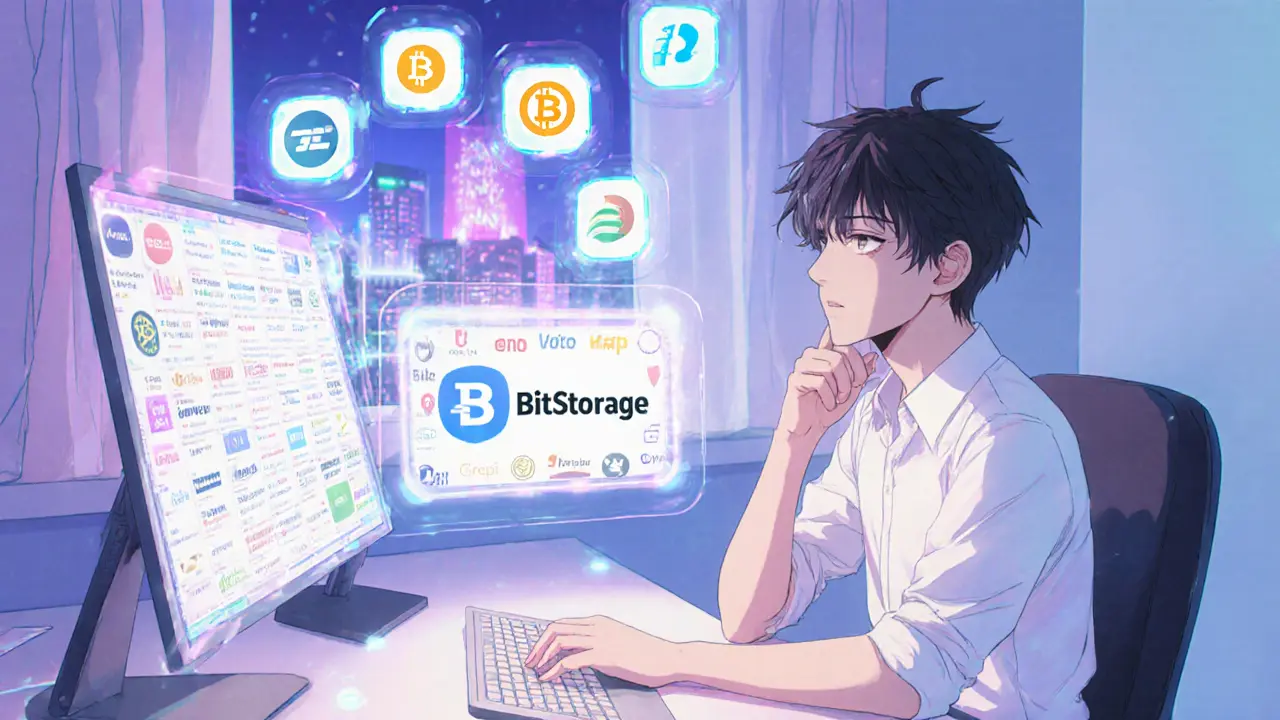OMGFIN Fee Calculator
Estimate your trading costs on OMGFIN based on trade size and UQC token usage.
Your Estimated Trading Costs
If you’re hunting for a crypto platform that blends low fees with a social twist, you’ve probably stumbled on OMGFIN - a Estonia‑registered cryptocurrency exchange that markets itself as a community‑driven trading hub. Launched in 2018, OMGFIN promises a collaborative market experience, but does it live up to the hype? This review breaks down the fees, security, community tools, and real‑world usability so you can decide whether to add it to your trading arsenal.
What Sets OMGFIN Apart?
Most exchanges focus on speed and sheer volume. OMGFIN flips that script by putting traders in a network where you can share orders, discuss strategies, and earn discounts for community participation. The platform supports over 40 crypto assets across 141 pairs, covering the big names like Bitcoin and Ethereum while still offering niche altcoins for volatility seekers.
Fee Structure - Why Low Fees Matter
At a flat 0.1% taker fee, OMGFIN undercuts many mainstream rivals. The fee drops further if you pay with the native UQC token - a 20% reduction - and an extra 30% if you share your order with friends or the broader community. In practice, a $1,000 trade on BTC/USD costs just $1, compared with $2‑$3 on larger exchanges. For frequent traders, those savings add up quickly.
Security - Cold Wallets and Regulatory Guardrails
OMGFIN claims 100% of user assets sit in cold wallets, meaning funds stay offline and out of reach from hackers. The platform is licensed by Estonian authorities, which brings mandatory compliance with KYC (Know Your Customer) checks, AML (Anti‑Money Laundering) protocols, and the EU’s GDPR data‑privacy rules. While this adds a few minutes to onboarding, it also builds a legal safety net that many offshore exchanges lack.

Social Trading Features - How Community Drives Profitability
The core appeal is the “network‑based” interface. Users can broadcast live orders, copy successful strategies, and earn token‑based discounts for bringing others into the fold. Think of it as a blend of a traditional order book and a social media feed. New traders benefit from visible, real‑time insights, while seasoned players can monetize their expertise by attracting followers.
Pros and Cons - A Straight‑Talk Summary
- Pros:
- Ultra‑low 0.1% fee, plus token‑driven discounts.
- Cold‑wallet‑only storage enhances security.
- Regulated under Estonian law - KYC, AML, GDPR compliance.
- Unique community tools for order sharing and copy‑trading.
- Reasonable selection of both major and niche coins.
- Cons:
- U.S. residents are blocked - a major market exclusion.
- Limited user reviews make reliability harder to gauge.
- Cold‑wallet focus may slow withdrawal times compared to hot‑wallet heavy platforms.
- Smaller overall market presence; liquidity can dip on low‑volume pairs.
How OMGFIN Stacks Up - Quick Comparison
| Feature | OMGFIN | Bitrue | Binance |
|---|---|---|---|
| Launch Year | 2018 | 2018 | 2017 |
| Trading Fee (base) | 0.1% | 0.15% | 0.10% (tiered) |
| Token Discount | 20% with UQC, +30% for shared orders | 25% with LEO | 25% with BNB |
| Cold‑Wallet % of Funds | 100% | ~80% | ~70% |
| US Access | No | No | Yes |
| Community Tools | Order sharing, copy‑trading, token rewards | Basic social feed | Limited (Binance Launchpad, referral) |
| Number of Trading Pairs | 141 | 200+ | 1,500+ |
Who Should Consider OMGFIN?
‑ **Social traders** who enjoy learning from peers and earning discounts for community activity.
‑ **Cost‑sensitive users** looking to shave off fee premiums, especially on mid‑size trades.
‑ **European‑based investors** who can clear KYC without hitting the US ban.
‑ **Security‑first folks** who value cold‑wallet storage over instant liquidity.
Getting Started - Step‑by‑Step
- Visit the official OMGFIN website and click “Sign Up”.
- Enter your email, create a strong password, and verify the address.
- Complete the KYC process: upload a government ID, a selfie, and proof of residence (the platform follows Estonian AML rules).
- Deposit funds - you can use fiat (EUR) or any of the supported crypto assets.
- Optional: Purchase UQC token to unlock the 20% fee cut.
- Explore the “Community” tab, share an order, and watch the discount meter climb as friends join.
Overall onboarding takes 10‑15 minutes, a bit longer than a no‑KYC platform but comparable to most EU‑registered exchanges.
Final Takeaway
OMGFIN isn’t trying to be the next Binance; it’s carving a niche where low fees meet crowd‑sourced trading insight. If you value community interaction, can live without U.S. access, and want the peace of mind that comes from full cold‑wallet storage, the platform is worth a test run. Keep an eye on liquidity for the more obscure pairs, and remember that the token‑discount system works best when you’re actively sharing trades.
Frequently Asked Questions
Is OMGFIN safe for storing large amounts of crypto?
Yes. OMGFIN stores 100% of user balances in cold wallets, meaning the assets are offline and insulated from hacks. However, withdrawals may take longer than on hot‑wallet‑heavy exchanges.
Can I trade on OMGFIN from the United States?
No. OMGFIN’s Estonian license restricts service to non‑US residents, so American traders must look elsewhere.
How do the UQC token discounts work?
Holding UQC tokens reduces the base 0.1% fee by 20%. If you also share an order with the community, an extra 30% discount applies, bringing the effective fee down to about 0.04% on qualifying trades.
What cryptocurrencies can I trade on OMGFIN?
The platform lists over 40 crypto assets, including Bitcoin (BTC), Ethereum (ETH), Ripple (XRP), and a range of altcoins like Cardano (ADA) and Polkadot (DOT). New listings are added quarterly.
How does OMGFIN’s community trading differ from simple referrals?
Beyond a referral link, OMGFIN lets you broadcast live orders, copy others’ positions, and earn fee discounts based on the volume your network generates. It’s a more interactive, profit‑sharing model.









Natalie Rawley
February 7, 2025 AT 19:46Brace yourselves, folks – OMGFIN’s fee structure is about to blow your mind! The base fee sits at a modest 0.1%, but wielding those UQC tokens slices a juicy 20% off that. Add the community share and you’re looking at a staggering 30% discount on top. In short, if you stack the discounts right, the effective fee is almost negligible.
Twinkle Shop
February 8, 2025 AT 13:49From a systemic perspective, the fee calculator encapsulates a multi-tiered discount architecture predicated upon tokenomics and network externalities. The baseline transaction levy of 0.1% is superseded by a reduction matrix wherein UQC token holdings confer a 20% proportional decrement, operationalized via smart contract parameters. Concomitantly, the community sharing protocol introduces an auxiliary 30% discount, contingent upon order aggregation mechanisms that mitigate slippage and augment liquidity depth. This combinatorial discount schema yields an effective fee rate that can descend below 0.02% under optimal conditions, thereby enhancing cost-efficiency for high-frequency market participants. Moreover, the integration of token-based incentives aligns user behavior with platform sustainability objectives, fostering a virtuous cycle of participation and reward distribution. The architecture, however, warrants rigorous audit to preempt potential vector attacks exploiting discount eligibility verifications. In sum, the fee calculator embodies a sophisticated, albeit complex, incentive model designed to democratize trading costs while preserving network integrity.
Kortney Williams
February 9, 2025 AT 07:53Essentially, the calculator shows you can cut fees dramatically if you hold UQC and share orders. It's a neat way to lower costs while staying engaged in the community.
Laurie Kathiari
February 10, 2025 AT 01:56Honestly, the platform reeks of trying too hard to look inclusive while hiding fees behind gimmicks. If you’re not using the token, you’re paying full price and it’s just another cash grab. They should be transparent instead of dressing up a simple 0.1% fee with fancy discounts.
Matt Nguyen
February 10, 2025 AT 19:59One must consider that the discount mechanisms could be a façade for deeper protocol manipulations – think about who really controls the UQC supply. If the tokenomics are tied to opaque governance, the "discounts" may simply be a way to funnel power to an elite few. In any case, the stated 0.1% base is a smokescreen for whatever hidden fees lurk beneath. Stay vigilant.
Cynthia Rice
February 11, 2025 AT 14:03The discount math is absurdly generous.
Alex Gatti
February 12, 2025 AT 08:06Yo, the fee calc is actually pretty sweet if you’re into stacking those discounts. Grab some UQC, share your order, and watch those fees shrink. It’s a simple win‑win for traders who want to keep more of their profit.
Carthach Ó Maonaigh
February 13, 2025 AT 02:09Look, the whole thing is a circus – you think you’re saving money but you’re just feeding the platform’s liquidity pool while they take a cut behind the scenes. The community discount is just a marketing ploy to get you to sync your trades with theirs, which only benefits the whales.
Jenise Williams-Green
February 13, 2025 AT 20:13Everyone’s singing praises about the discounts, but let’s be real – if you don’t have UQC, you’re basically paying the full price and that’s a straight‑up rip‑off. The whole community‑share idea sounds nice until you realize it pushes you into a herd mentality that benefits the platform more than the individual.
Bhagwat Sen
February 14, 2025 AT 14:16Honestly, the calculator is just a slick UI that hides how volatile the token discounts can be. One day you’re saving big, the next the token’s value crashes and you’re left with higher effective fees. Don’t let the shiny interface fool you about stability.
John Corey Turner
February 15, 2025 AT 08:19It’s cool that the platform encourages community sharing – it can really improve order book depth. Just make sure you understand the trade‑off: you get lower fees, but you also cede some control over execution timing.
Kimberly Kempken
February 16, 2025 AT 02:23Give me a break, the so‑called “community discount” is just a way to force traders into a collective consensus that benefits the platform’s bottom line. If you’re not into that, you’re stuck paying the regular fee, which is already overpriced.
Brooklyn O'Neill
February 16, 2025 AT 20:26Hey folks, just a heads‑up: while the discounts look tempting, always double‑check the actual fee you’ll pay after the token and sharing deductions. It’s easy to miscalculate and think you saved more than you actually did.
Adarsh Menon
February 17, 2025 AT 14:29Wow, another “awesome” discount feature – because we all love hidden fees, right? The drama of hunting token discounts is just a distraction from the fact that the exchange is still charging you extra in subtle ways.
Jim Griffiths
February 18, 2025 AT 08:33If you want a quick way to see your real cost, plug your trade amount into the calculator, tick the UQC box if you have tokens, and check the community share option. The result will show you the effective fee rate – simple as that.
Tyrone Tubero
February 19, 2025 AT 02:36Sure, the calculator is user‑friendly, but remember that the discounts only apply if the platform’s governance chooses to keep the parameters unchanged. Any tweak in the smart contract could instantly invalidate your entire fee‑saving strategy.
Taylor Gibbs
February 19, 2025 AT 20:39It’s important to view these discounts as part of a broader ecosystem incentive. By rewarding token holders and collaborative traders, the exchange fosters a more liquid market, which ultimately benefits all participants.
Amy Harrison
February 20, 2025 AT 14:43Love the fee calc! 🎉 It’s super easy to see how much you save, and the UI is clean. Just remember to keep your UQC stashed for that extra 20% off – every little bit helps in the long run! 🚀
mukesh chy
February 21, 2025 AT 08:46People act like these discounts are revolutionary, but anyone who’s looked at the code knows the math is straightforward – you either have the token or you don’t. It’s not rocket science, just basic percentage reduction.
Marc Addington
February 22, 2025 AT 02:49Let’s be clear: the platform’s primary goal is to keep fees high for the masses while offering token‑based perks to a select elite. Those “discounts” are merely a veneer to mask the underlying exploitation.
Amal Al.
February 22, 2025 AT 20:53While the discount features are certainly appealing, it is paramount to conduct a comprehensive risk assessment; consider the volatility of UQC, the potential for governance changes, and the impact on overall trade execution costs!!! Only then can one make an informed decision.
Scott McReynolds
February 23, 2025 AT 14:56When diving deep into the mechanics of the OMGFIN fee calculator, one must first acknowledge the foundational premise: fees are not static, they are subject to a dynamic interplay of token holdings, community behavior, and platform governance. The base fee of 0.1% serves merely as an entry point, a baseline from which discounts cascade like a waterfall of savings. By possessing UQC tokens, a trader instantly activates a 20% reduction, which, mathematically, translates to a 0.02% fee – a substantial drop for high‑volume participants. Yet the narrative does not end there; the community sharing option adds an additional layer, a 30% shave off the already reduced rate, yielding an effective fee that can descend below 0.014% under optimal conditions. This compounding effect is reminiscent of a well‑engineered financial instrument, where each component synergistically amplifies the benefit of the other. However, such elegance must be tempered with caution. The token’s market price can fluctuate wildly, turning a discount into a cost if one must purchase UQC at a premium merely to qualify. Moreover, the governance model overseeing discount parameters could be altered, stripping away benefits with a single proposal. Traders must therefore weigh the immediate fee reduction against the long‑term opportunity cost and potential exposure to token risk. In practice, a disciplined trader might allocate a modest portion of capital to acquire UQC, thereby unlocking the discount while preserving liquidity for core strategies. Conversely, a more risk‑averse participant could forgo the token entirely, accepting the full base fee in exchange for simplicity and reduced exposure. Ultimately, the decision hinges on individual risk tolerance, trading volume, and confidence in the platform’s governance stability. As with any financial tool, thorough due diligence, scenario analysis, and a clear understanding of one’s own objectives are indispensable before committing to a discount‑driven fee regime.